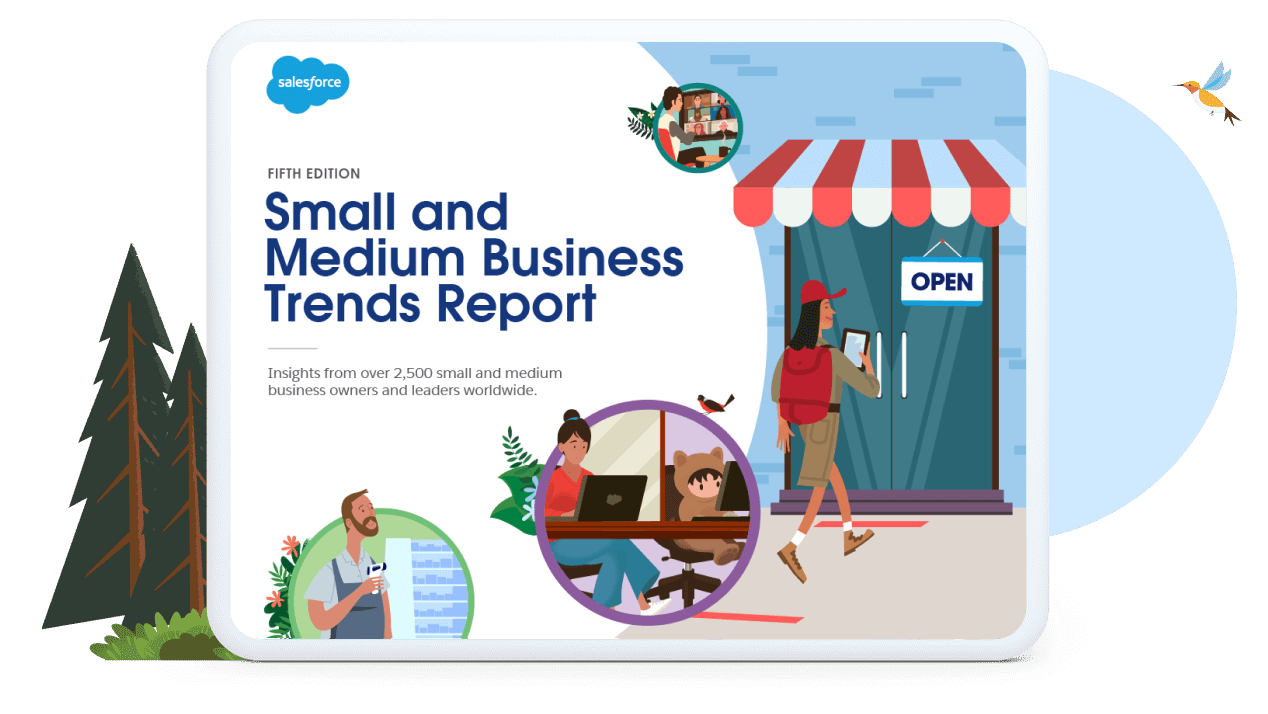The Small Business Trends That Drove Success in 2021 – And Beyond
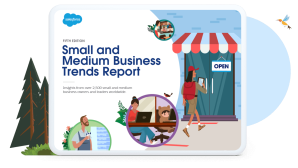


Out of crisis comes opportunity. Read on to see how small business trends point towards a faster, smarter tomorrow for UK SMEs.

Ana Lara
Small business trends reveal a post-pandemic landscape that’s being reimagined in fascinating ways. This isn’t surprising, considering many industries had to shift to new business models in the face of lockdown measures.
What is eye opening is the speed of that change. Nearly overnight, many SMEs had to reach their customers in new places, find ways to empower decentralised workforces, and keep up with constantly changing regulations and safety concerns. On top of that, the customer suddenly had a whole new set of expectations for safe and seamless interactions.
It was a lot to adjust to, but UK SMEs were up to the task. In fact, small business trends show that many of the stop-gap measures instituted by SMEs will have long-term payoffs. Let’s take a deep dive into the fifth edition of Salesforce’s Small and Medium Business Trends Report, which gathers insights from over 2,500 SME leaders, to see how setbacks are being turned into gains, and why the future looks to be a faster, smarter place.
Small business trends point towards a future of flexible work
One of the most significant small business trends highlighted in the report is the shift to remote and flexible work. Shutting down offices and moving away from face-to-face interactions presented some complications at the beginning of the pandemic, but the payoffs of the shift are increasingly evident. After all, offices – and office hours – involve boundaries and limits. But the work-from-anywhere potential of remote employees means that those boundaries have vanished.
How this shift away from the office will affect worker wellbeing remains to be seen. It’s also not clear whether recent productivity gains spurred on by flexible working will be long lasting. But the potential benefits of a more flexible workforce are certainly intriguing.
The Small and Medium Business Trends Report reveals:
-
50% of growing SMEs offered flexible working arrangements during the pandemic.
-
The top employee expectation is now flexible scheduling.
-
27% of SME leaders have focused on connecting employees’ passions to their work, which is helpful when keeping decentralised employees engaged and motivated.
Flexible working not only enables SMEs to be more agile and employee-centric; it can help them recruit and build trust with the workforce.
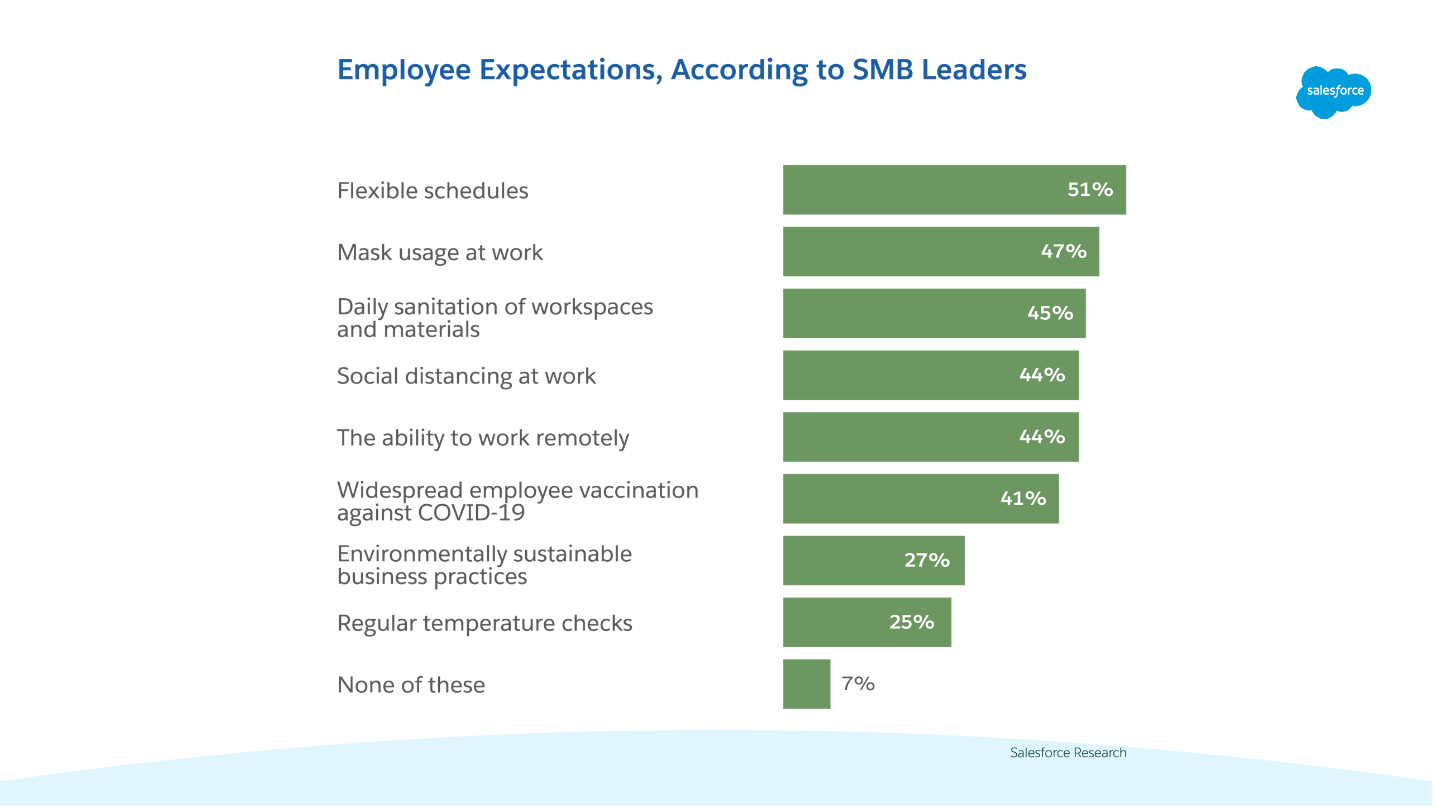
New customer expectations are raising the bar for ecommerce experiences
Even traditional brick-and-mortar consumers were forced online when lockdown measures hit, and nearly every customer has become increasingly digitally savvy. This has led to a corresponding increase in expectations for fast and personal service. After all, no one’s going to wait around while you peek in the digital stockroom. Not when the next business is just a click away.
Have a look at the seismic impact that the pandemic has had on digitisation:
-
77% of SMEs either have ecommerce or plan to add it in the next year.
-
Nearly a third of SMEs (31%) have added ecommerce in the past year.
-
71% of SME leaders say their customers now expect online interactions.
-
72% of SMEs have increased their online presence in the last 12 months.
With over three-quarters of small and medium-sized businesses predicted to have ecommerce capabilities within the year, digitisation is no longer an advantage; it’s a requisite for remaining competitive.
SMEs are turning to tech to engage the customer
When we look at the acceleration of digital transformation, it’s evident that the most successful SMEs are putting their customer at the heart of that process. Indeed, the ‘age of the customer’ is leading to a new focus on personalisation, having a single source of truth and creating memorable customer journeys.
SMEs that don’t offer personalised communications going forward will find it difficult to compete with those that do. In fact, many customers now assume that their interactions with a company will be efficient and personalised. The State of the Connected Customer report reveals that 83% of customers expect to engage with someone immediately when contacting a company. Many SMEs have acted on these new expectations for efficient service, and the small business trends report shows that 42% of SMEs have expanded the ways that customers can reach them.
But SMEs are not just waiting for customers to reach out – they’re finding new ways to reach them as well. The biggest driver of this engagement? New technology.
According to the Small and Medium Business Trends report:
-
71% of growing SMEs say their business survived the pandemic because of digitisation.
-
53% of growing SMEs have accelerated their technology investment in sales.
-
50% of growing SMEs have accelerated their technology investment in marketing.
Technology investment has increased across all functions since August 2020. The report shows that 56% of SMEs now have a CRM system, with this being a key differentiator between growing SMEs (67% use CRM) and stagnant/declining SMEs (only 48% have a CRM system). The key takeaway? Growing SMEs are proactively prioritising good customer experiences, while many stagnant/declining SMEs appear to be acting more conservatively.
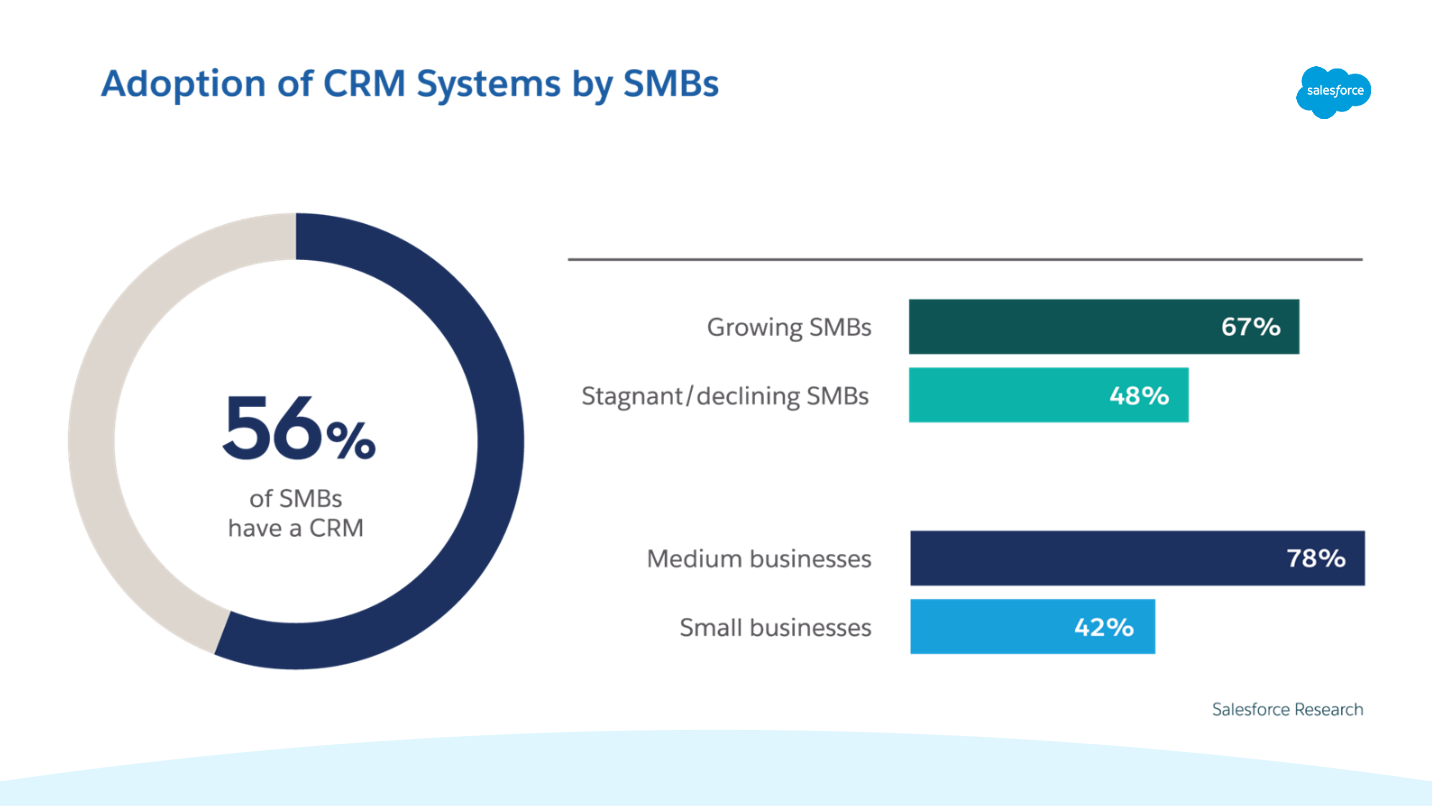
SMEs are showing their values – and their communities are showing up for them
Not only do today’s customers expect great digital experiences; they expect companies to share their values. The concerns of the conscientious consumer go beyond sustainable products, business practices and social issues, as even pandemic-related messaging has been in the spotlight.
-
Salesforce’s Connected Customer survey found that 90% of customers believe that how a company acts during a crisis demonstrates its trustworthiness.
-
Nearly half (47%) of SMEs have been more careful with their customer communications.
Furthermore, there has been a push towards supporting local and ethical businesses, as businesses faced a number of challenges during the pandemic. The data gathered on small and medium business trends also shows how integral community support was for many SMEs, who had to rely on both their neighbours and the government.
-
About two-thirds of SME leaders say that government and community support has been important to their organisation’s survival.
-
63% of small businesses that applied for local government aid received it.
-
77% of small businesses that applied for national/federal government aid received it.
-
Only 39% of SMEs say they did not apply for aid.
These small business trends point towards a future of sensitive and empathetic messaging, value-driven decision-making, and relationships that are more meaningful and less transactional.
Small business trends are sparking long-term change
Perhaps the biggest takeaway from the small business trends report is that three-quarters of SME leaders believe that shifts they’ve made to their business operations will have long-term benefits.
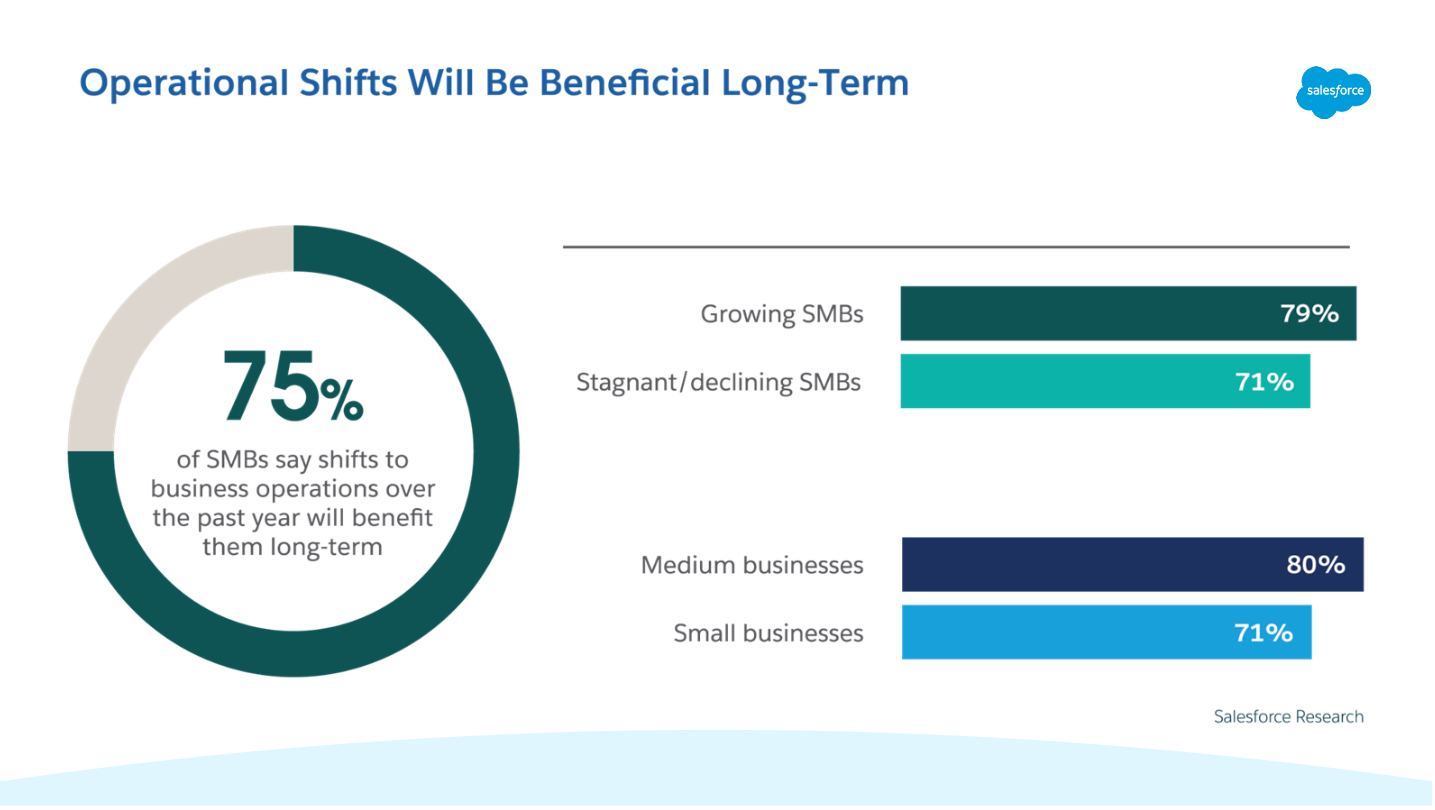
Empowered employees, flexible working, meaningful engagement, customer-centricity and community support have come into focus. All the new tech and strategies that were deployed to counter the effects of the pandemic have done something surprising: they’ve made many companies stronger than ever. As the saying goes, out of crisis comes opportunity. And for many SMEs, this opportunity promises a brighter future.
To see more small business trends driving today’s SMEs, download the Small and Medium Business Trends Report here.
The SMB Trends Report 5th Edition
Discover what’s driving today’s small businesses – and see where they might be headed next.
